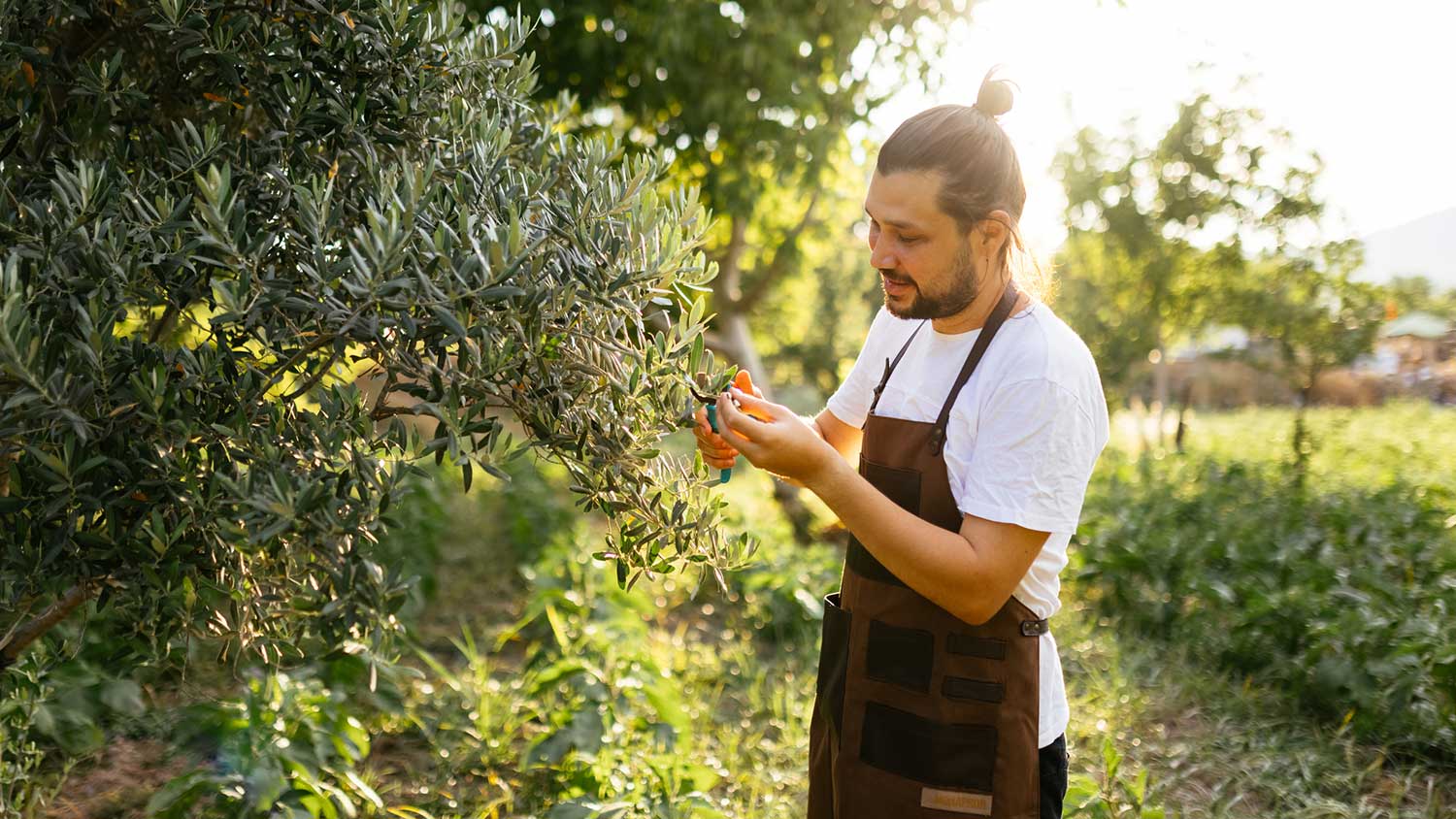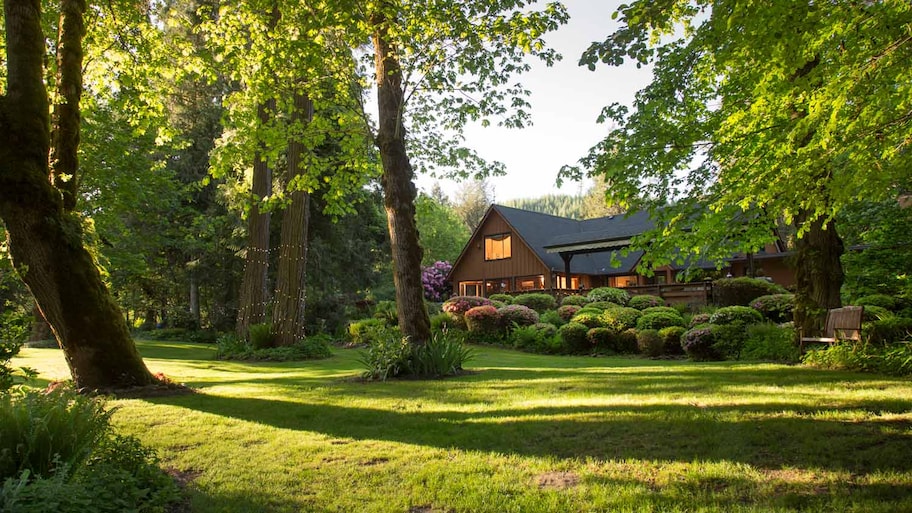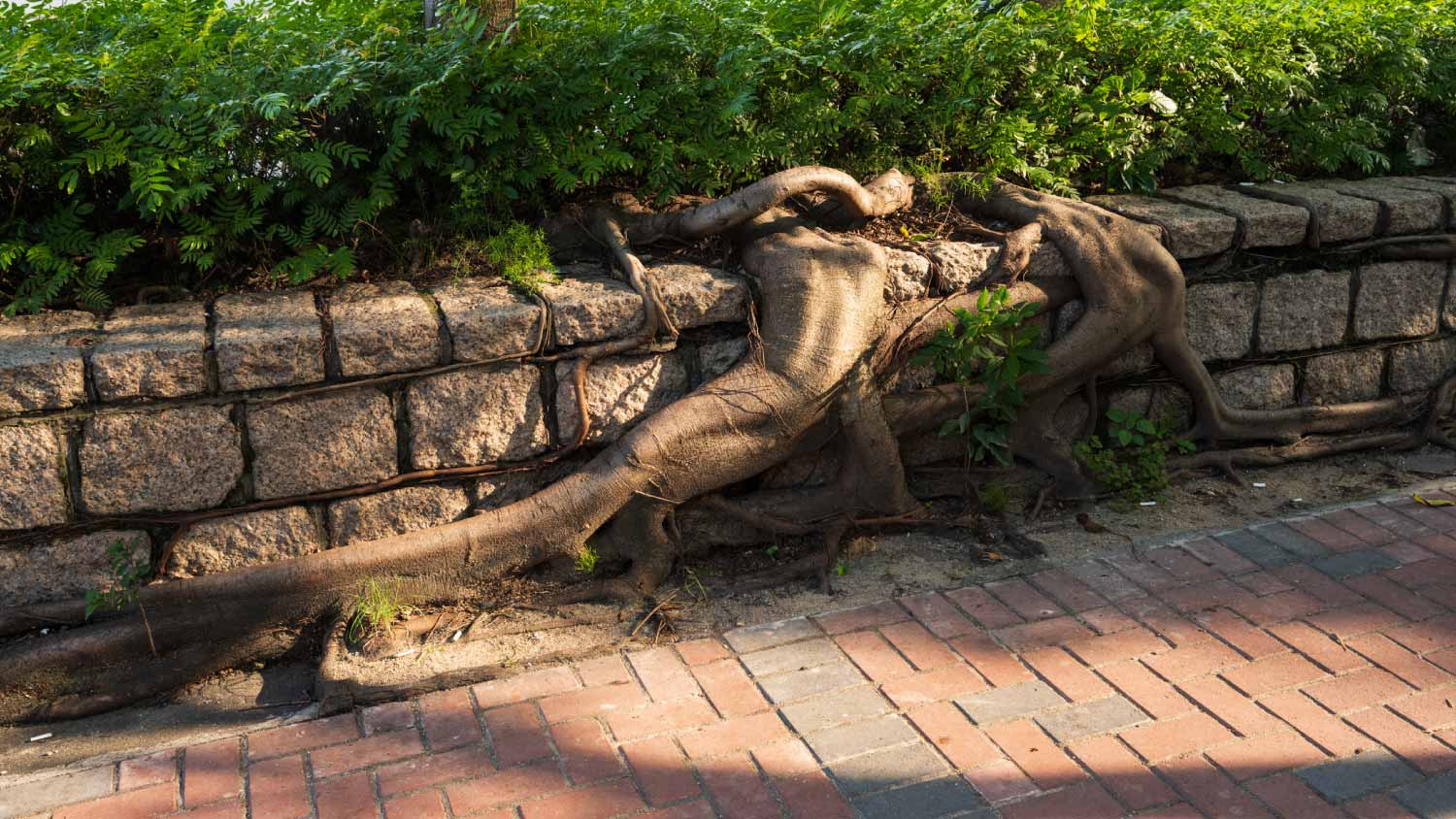All Good in the Wood: Top 5 Signs of a Healthy Tree
Learn how to tell if your tree is right-as-rain


Healthy trees have dense bark, strong branches, and lots of vibrant leaves.
Regularly inspect for bare spots, excessive dead branches, and signs of tree disease.
Keep trees healthy with proper pruning, mulching, watering, and fertilizing.
Your best bet for saving a dying tree is to call a certified arborist.
From effervescent evergreens to dense deciduous trees, nothing brings your outdoor space to life like a happy tree. Monitoring your tree’s health is crucial for addressing problems before its number of rings is cut short. Let’s branch out and discuss all the signs of a healthy tree and how you can stay on top of its well-being.
How to Tell If Your Tree Is Healthy
A happy, healthy tree will show its true colors. Here are the key signs that your tree is cool as a conifer.
1. One “Leader” Stem off the Trunk
In most cases, a healthy tree should only have one leader, which is a strong vertical branch coming off the top of the trunk. Along with keeping a straight, solid profile, a tree’s leader adds strength and stability to its structure. If a tree has more than one leader, it might split open, leaving it open to disease and ravenous insects.
2. Strong Bark
Happy trees typically have thick, healthy bark throughout. The bark shouldn’t be loose or peeling, except on certain trees, like birches and maples. Healthy trunks are also free of fungi, dead branches, large holes, and cracks.
Important Note: When checking the health of your bark, be extra careful not to gouge or break it off, as this creates a wound that can invite insects and disease.
3. Full, Robust Branches
A thriving tree should have strong branches that can’t get bent or snapped easily. Beneath the thin outer layer of bark should be a vibrant and healthy green core. Dead and broken branches are normal here and there, but if you’re finding excessive amounts, this could be a bad sign. Either way, these are a major “come hither” for insects and diseases, so prune them ASAP.
4. Lots of Leaves
Healthy trees grow thick, consistent bundles of leaves throughout their canopy. Bald patches aren’t normal for a tree, regardless of its age. Bare patches could be a sign of damage from improper pruning, pesticide damage, pest infestation, disease, or lack of nutrients. Check with a certified arborist near you to determine the exact cause.
5. Healthy Leaves
Healthy leaves are a sign your tree is feeling fine. Check to see if they’re the right color for the season. Ensure there are no crispy edges. They shouldn’t be yellow or yellow-green unless that’s their natural color.
How to Keep Your Tree Healthy

Along with regular inspections, there are crucial care steps to take to maintain the health of your trees. If you need help maintaining your trees, consider hiring a local tree maintenance team to put its care in reliable hands.
1. Watering
Watering your trees is important at any age. A great method for tree watering is using a soaker hose or drip system. Generally, a tree should get around 5 gallons per inch of trunk diameter.
2. Mulching
A nice, smelly layer of mulch is one of the kindest gifts you can give your trees. This helps keep moisture in the soil while providing a stronghold against weeds. On top of that, it helps hold in all the organic matter your tree needs.
3. Pruning
Proper pruning is vital to your tree’s health—should you need to prune at all, that is. Remember to always have a good reason to prune your trees. Unless you’re removing dead or diseased portions of the tree or maintaining the shape, you don’t need to bust out the shears. As a general rule, never remove more than one-third of its branches at a time.
4. Fertilizing
It’s good practice to apply a slow-release fertilizer before your trees reach their peak growing season. Be cautious with fertilizer, though. While it can replace nutrients, too much can do more harm than good. It’s best to get an evaluation from a local soil testing service before any treatments.
5. Pest and Disease Prevention
The best defense is a good offense when it comes to tree pests—it's all about keeping an eye out for early signs of trouble. Regularly check your trees for discolored leaves or unusual growth. If you spot pests, use natural predators, physical barriers, or targeted treatments to keep them under control without harming the environment.
Conducting regular maintenance on your tree with proper watering, pruning, and good soil helps it fight tree diseases on its own. If you spot an issue, removing infected branches and applying the right treatments can stop problems from spreading and keep your trees looking great.
Spotting Common Tree Health Problems
Regular inspection is one of the most important steps of good tree care. Unfortunately, the signs of a dead or dying tree are even more apparent than the signs of a healthy one. Here’s what to look for:
Bare, leafless patches in deciduous trees during peak blooming season
Sections without needles in evergreen trees
Excessive dead or dying branches
Early fall foliage, a key sign of stress
Wounds, holes, or cracks in the trunk
Yellowing leaves, which could point to underwatering or chlorosis, a common tree disease
Tree branch flagging (when leaves wilt and turn brown), a key symptom of Dutch elm disease
Powdery patches or spots on the leaves, indicating a powdery mildew infection
Branches that snap easily instead of bending
Fungi growing in the bark or near the base of the tree
Can You Save a Dead or Dying Tree?
If your tree is sick or dying, you might be able to save it by pruning off dead or diseased portions. However, more often than not, the problem at hand is more complex. Your best bet is to call a local tree service with a certified arborist on board.
A dead tree, on the other hand, needs to go ASAP. These create a serious safety hazard and can do real damage to your home if they come down. Don’t wait to call a tree removal service near you.





- When To Cut Down A Tree: 13 Ways To Tell
- How to Save a Dying Tree: 8 Tips to Try
- How to Tell If a Tree Is Dead (and What to Do About It)
- Is My Tree Dead or Dormant?
- How to Repair a Damaged Tree Trunk
- How to Tell if a Tree Is Going to Fall: 5 Warning Signs to Look Out For
- 7 Reasons Why You Shouldn't Plant a Tree in Your Yard
- Who Do I Hire to Spray My Trees? A Complete Guide
- What Causes Large Holes in Tree Trunks?
- Who Do You Call To Clear Away Dead Trees?










